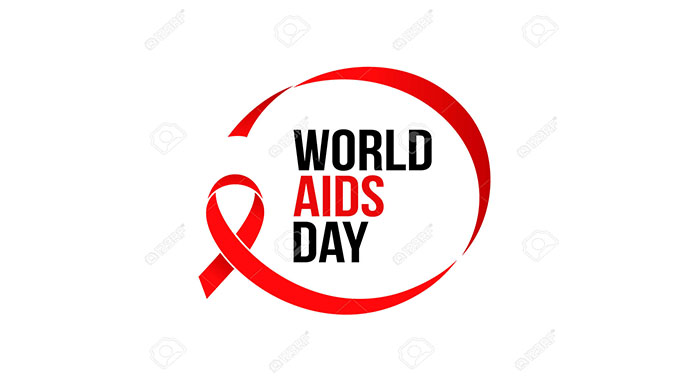World Aids Day commemorations held

EVERY year on December 1, since 1988, World Aids Day is commemorated.
The 2021 commemorations for this day are going by the theme; Ending the HIV Epidemic: Equitable Access, Everyone’s Voice.
The global pandemic is still with us nearly 40 years after it emerged, with tuberculosis being the leading cause of death globally for people with HIV.
A survey conducted in 2015 on people living with HIV in Zimbabwe showed that 76,8 percent of these people knew their status.
A pleasing 10 percent increase on these statistics was recorded in 2016, presenting an 86,8 percent of these people knowing their status.
The number of people living with HIV who are now on lifelong anti-retroviral therapy (ART) has also soared from the 88,4 percent recorded in the last Zimphia to a significant improvement of 97 percent.
While considerable progress has been made towards ending Aids as a public health threat, the HIV epidemic is not over and young people remain disproportionately at risk.
Comprehensive sexuality education (CSE) is essential for young people to be able to protect themselves from HIV.
It also helps young people avoid unintended pregnancy and other sexually-transmitted infections, encouraging them to seek health-related information and services, promoting values of tolerance, mutual respect and non-violence in relationships and also supporting a safe transition into adulthood.
The criminalisation of sex workers must stop whereas women and girls must have their human rights fully respected. (Unesco).
Thanks to advances in anti-retroviral therapy, the highly effective medicine used to treat HIV, individuals with HIV who take their medicine as prescribed and, as a result, maintain an undetectable viral load can live long, healthy lives and have effectively no risk of sexually transmitting HIV to a partner.
The development of Pre-exposure Prophylaxis (PrEP), a daily regimen of two oral anti-retroviral drugs in a single pill, has proven to be highly effective in preventing HIV infection for individuals at high risk, reducing the risk of acquiring HIV by up to 97 percent.
Ending the HIV Epidemic
Four key strategies which, when implemented together, can end the HIV epidemic are:
— Diagnosing all people with HIV as early as possible;
— Treating people with HIV rapidly and effectively;
— Preventing new HIV transmission by using proven interventions, including pre-exposure prophylaxis; and
— Responding quickly to potential HIV outbreaks to get needed prevention and treatment services to people who need them.
In a landmark advance, two large-scale clinical trials found that a long-acting form of the anti-retroviral drug, cabotegravir, injected once every eight weeks was safe and more effective at preventing HIV acquisition than daily oral pre-exposure prophylaxis.
Other forms of long-acting HIV prevention modalities under investigation include intravaginal rings and implants. If approved by regulatory agencies, the monthly ring would provide women in developing countries with a discreet long-acting HIV prevention option which they would also be able to control. Development of a safe and effective HIV vaccine remains a top priority.
While we commemorate the World Aids Day, it’s sad to note that Covid-19 is threatening the progress that the world has made in health development over the past 20 years, including the gains we have made against HIV.
It is important to maintain essential HIV services during Covid-19 and beyond and to also ensure continued provision of HIV services for children, adolescents and populations at most risk of the disease.
In many countries in sub-Saharan Africa, testing for Covid-19 has heavily relied on the laboratory systems built and developed by HIV and TB programmes. Devices have been shared across such programmes and they include infrastructure, sample transport systems and highly skilled staff.
As we may know that to end Aids and defeat Covid-19, we must eliminate stigma and discrimination, the United Nations (UN) advocates governments must put people at the centre and ground our responses in human rights and gender-responsive approaches.
There is hope for a cure! Timothy Ray Brown was widely recognised as the first person to be cured of HIV and for inspiring and advocating for scientists. In 2007, Mr Brown underwent a procedure to treat a cancer called Acute Myeloid Leukaemia (AML) called a bone marrow transplant.
Stem cells were transplanted from a donor who had a genetic mutation of a CCR5 gene, which makes the body resistant to HIV. On the day of the transplant, HIV treatment was discontinued.
While Mr Brown thrived for a short period of time, his AML rebounded later that year, leading to a second transplant with the same donor in 2008.
Throughout this time, he continued to receive tests for signs of HIV, he stayed negative with no signs.
Progress with cure research continues.
In 2019, a second man, Adam Castillejo (the “London Patient ”), diagnosed with Hodgkin’s lymphoma, was declared to be virus-free after receiving the same bone marrow transplant procedure as Mr Brown. Another individual recognised as the “Brazil Patient” was treated with the powerful, novel drug combination. Both individuals remain virus-free.
While the bone marrow transplant procedure shows promising results for HIV cure, this procedure cannot be adopted as a routine approach for treating HIV infection as transplants carry significant safety risks and would be too difficult to roll out globally to cure the millions of people living with HIV, including those in low resource settings.
The search for a cure continues and this year’s fight hasn’t been any better prompted by the outbreak of the
Covid-19 pandemic which has stalled our efforts towards ending Aids.
No one is safe unless we are all safe.
Dr Tatenda Simango can be contacted on [email protected]












Comments